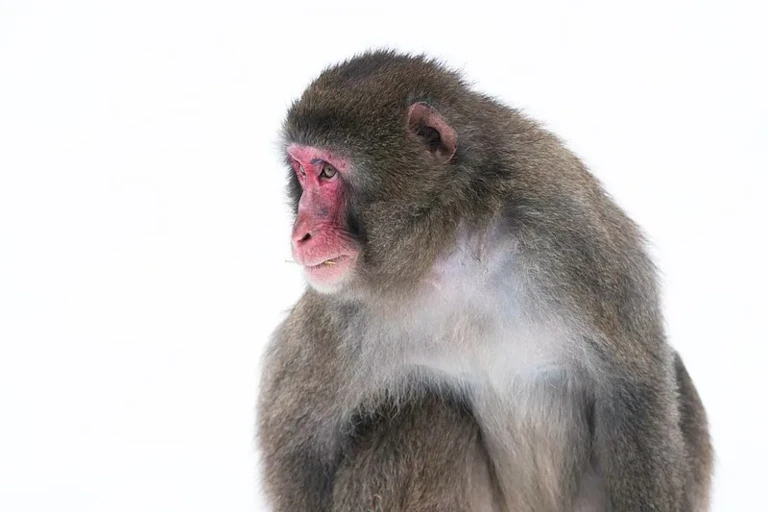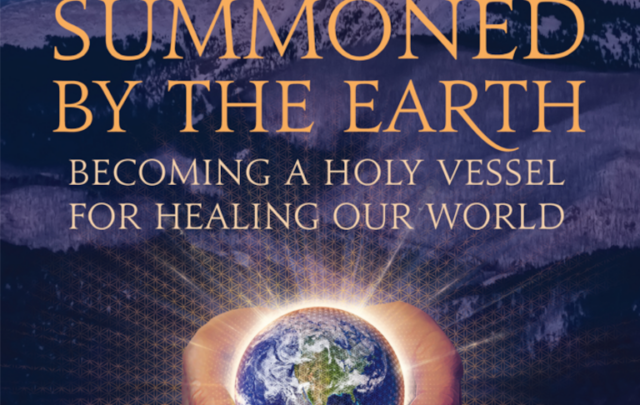Fossil Obsolescence
Years ago I stumbled into a useful explanatory insight concerning our time in history, which is the insight, when stated as a concise narrative, which says that …
- (a) Almost everything about our current dominant world civilization embodies a design premise, which is the premise that fossil fuels are abundant and cheap (with “cheap” being a shorthand term for both relatively low economic and ecological costs).
- (b) This design premise was relatively true for much of that last hundred and fifty years or so, though it hasn’t been nearly as true in recent decades as it was fifty or sixty years ago. And it’s been becoming less true each day, week, month and year.
- (c) This underlying design premise, in fact, can in no way be regarded as basically true any longer, which means that it is an obsolete design premise. (Merriam-Webster Dictionary defines a thing as obsolete when it is “[a] no longer in use or [b] no longer useful”.) It is crucial to the understanding of the obsolescence of this design premise that currently this now fully obsolete premise is still driving the design of most things, and so it is still “in use,” despite it no longer being a useful design premise. The premise is obsolete because it is no longer useful.
I conceived this piece of framing for our current world situation when my focus largely centered on what I then called Integrative Design Theory (IDT), which was (and remains) my name for extending Ecological Design Theory into a more extended, expansive and comprehensive conceptual space, one which explicitly considers ecological dimensions of design practice while giving equal consideration to well-being (health) in a wider set of domains, such as social well-being, economic well-being, and the overall well-being of all beings and things. So it was (and remains) a way of framing design which includes and transcends ecological design.1
In IDT, all things shaped or created by humans, material or otherwise, are part of the design process. They are ‘designed’ things. IDT is concerned mainly with those things designed by humans, which is not to say that we’re not also concerned with those things designed and shaped by other-than-human beings. It’s just a matter of emphasis.
While IDT has served as the root and branches (and/or vines!) of nearly all of my writing and thinking as an ecocultural philosopher,2 my application of IDT inquiry has shifted in emphasis in recent years. Initially, my emphasis was strongly weighted toward material culture. Now my emphasis is strongly weighted toward “non-material culture”. But it is crucial to my perspective on both of these that I see these two as deeply intertwined, fundamentally mutually entangled. One cannot really understand one of these without also understanding the other—and they are best understood as comprising a whole.
Cognitive Exaptation
Exaptation and the related term co-option describe a shift in the function of a trait during evolution. For example, a trait can evolve because it served one particular function, but subsequently it may come to serve another. Exaptations are common in both anatomy and behaviour.
Bird feathers are a classic example. Initially they may have evolved for temperature regulation, but later were adapted for flight. — Exaptation, Wikipedia
Like so many of our words and phrases, the phrase “cognitive exaptation” means a variety of things to a variety of different people working in a variety of different fields. One valid meaning of the phrase is to use it to indicate how a concept or idea can emerge to serve one purpose and evolve to serve yet another purpose altogether.
The insight I shared under the heading of Fossil Obsolescence (above) emerged for me as a key insight in my contemplation of the metacrisis (or polycrisis). It enabled me to think more clearly and to ask further questions. My concept of Fossil Obsolescence was a particular insight leading toward a much more generalized conceptual insight concerning obsolescence in relation to human culture and civilization. It is akin to a particular species of insight within something roughly analogous to a taxonomic ranking of concepts, ideas or insights. To know the difference between a hedgehog and a fox is important, but to understand them in relation to one another it is good to keep in mind that each are mammals. (Only sometimes is a hedgehog and a fox the sort of creature which Isaiah Berlin was writing about in The Hedgehog and the Fox.)
Fossil Obsolescence (short for fossil fuel obsolescence) turned out to be just one among a great many species of the same taxonomic class. It isn’t useful to go on believing — and behaving as if — fossil fuels are cheap (in both senses of ‘cheap’) when in fact they are far more costly ecologically than we can afford, and will continue to become ever so much more expensive in the financial sense of cost. But there are other creatures in these forests, mountains and deserts, and there is little point in focusing all of our attention on just this one.
Through cognitive exaptation (of a particular kind), I was able to evolve my understanding to include many species of cultural obsolescence in my more generalized concept of cultural obsolescence.
Cultural Obsolescence
Upon very careful observation, the concept of “a culture” (as in a particular culture) is a heuristic concept rather than a fully coherent and formally definable one. The reasons for this are a bit complex, but it relates to the fact that any given contemporary culture is likely to be comprised of many subcultures, and it can be argued that even subcultures are themselves comprised of subcultures. So there is simply no sound and definitive method of discerning one culture as an entity apart from another, in which the boundaries between cultures are sharply defined. Another way of putting it would be to say that cultures are distinct from one another only in the sense of “family resemblance” described by the philosopher Ludwig Wittgenstein.3
That said, the phenomenon we call ‘culture’ (as contrasted with entities we might call cultures, in the plural sense), has, I think, a very discernible conceptual boundary with which to contain it.
Here’s how I presently define “culture”:
Now, we all know that Wikipdia, like ChatGPT, is not without its flaws. But have a look at how Wikipedia presently defines the word ‘culture’.:
Culture (/ˈkʌltʃər/ KUL-chər) is a concept that encompasses the social behavior, institutions, and norms found in human societies, as well as the knowledge, beliefs, arts, laws, customs, capabilities, and habits of the individuals in these groups.[1] Culture is often originated from or attributed to a specific region or location.
Humans acquire culture through the learning processes of enculturation and socialization, which is shown by the diversity of cultures across societies. — Wikipedia, Culture
This is true, but it is also a very flawed definition of culture, because it implies that only humans have ‘culture’. But if the presence of social learning defines culture, this definition is very far from adequate.
Elsewhere in Wikipedia:
Social learning refers to learning that is facilitated by observation of, or interaction with, another animal or its products.[1] Social learning has been observed in a variety of animal taxa,[2][3] such as insects,[4] fish,[5] birds,[6] reptiles, amphibians[7] and mammals (including primates[8]).
Social learning is fundamentally different from individual learning, or asocial learning, which involves learning the appropriate responses to an environment through experience and trial and error.[9] Though asocial learning may result in the acquisition of reliable information, it is often costly for the individual to obtain.[10] Therefore, individuals that are able to capitalize on other individuals’ self-acquired information may experience a fitness benefit.[10] However, because social learning relies on the actions of others rather than direct contact, it can be unreliable. This is especially true in variable environments, where appropriate behaviors may change frequently. Consequently, social learning is most beneficial in stable environments, in which predators, food, and other stimuli are not likely to change rapidly. — Social learning in animals, Wikipedia
Social learning among non-human animals is presently confirmed as a scientific fact. (If anything is a fact.) A fact woven into the heart of a whole class of scientific and philosophical research which goes by the odd name “animal culture”. It’s an odd name because…, well, humans are also animals — mammals, primates. Welcome to the world where humans bear a family resemblance with …, well, all other animals! No, dearies, you’re not species-alone in having culture. Animals with cultures are rather common. But, as we shall see at some point in this series of articles, humans are unique in both the kind and degree to which we are embedded in culture. We are not uniquely unique, however. We’re just a bit odd, as animals go.
Animal culture can be defined as the ability of non-human animals to learn and transmit behaviors through processes of social or cultural learning.[1][2][3][4] Culture is increasingly seen as a process, involving the social transmittance of behavior among peers and between generations. It can involve the transmission of novel behaviors[5] or regional variations that are independent of genetic or ecological factors.[6] — Animal culture, Wikipedia
Notice the anthropocentric bias which oddly found its way into this last Wikipedia article “the ability of non-human animals….” What is it about humans (or, rather, those acculturated into certain human cultures) which results in this strong need to sharply distinguish us from other animals which share with us the trait of having culture?
For a while, perhaps a few millennia, “civilized” humans have generally regarded their own species as ontologically distinct from “the animals.” Indeed, civilized humans have often tended to regard those humans who are not “civilized” in Derrick Jensen’s definition of ‘civilization’, as less-than-human, other than human — mere animals, or ‘savages’.
Generally, it’s only socially acceptable (in “my culture” — hmm?) to call someone an “animal” if it is said during or shortly after a particularly wild session of coitus, as a term of endearment: “Oh! You’re an animal!” (In older movies, this is followed by smoking cigarettes together.)
This anthropocentrism (and ethnocentrism), also called “human exceptionalism” (or cultural chauvinism) or “human supremacism,” it turns out, is a consequence of social learning. It is taught to us. We are acculturated into it in those cultures which take it for granted, or given. This premise4 seems perfectly natural to those who dwell within such cultures. (Now I find myself wishing for a word which indicates cultural destinctness within a culture, but which doesn’t have the same shape and meaning as “subculture”.)
It turns out that anthropocentrism is one among the very many (and a key one!) cognitive drivers of the polycrisis / metacrisis. It’s an obsolete premise about who we are as animals. It distorts our understanding of our world and results in very poor designs.
Imagine a world
But I’ve said enough for now. This article will be followed up by more in a series on the topic of the nature of culture and the culture of nature … in a time of rather dramatic and disorienting obsolescence.
We will focus quite a bit in this series on the topic of “cognitive drivers” of the metacrisis, and how human cognition dwells within a space of culture which is our shared and socially learned cognition. And we plan to very significantly take up the topic of ontology, especially relational ontology. But we can only tread such terrain slowly, deliberately and carefully.
Meanwhile, please remember…. A thing is obsolete when it is either (a) no longer in use, or (b) no longer useful. What this series of essays and articles means to reveal is that we’re living in a time in which many of our dominant culture’s most cherished beliefs and attitudes are no longer useful (obsolete) to us. Our purpose in this series is to explore alternatives that are far more useful, and less antiquated … or biased.
I’m going to explain, as best I can, why humanity, as we’ve known it, is entering into an ontological revolution which emphasizes relationship as fundamental to who and what we are as animals. And I will compare and contrast the emerging relational ontology of “our culture”to what proceeded it, which was an ontological worldview which emphasized apartness, discreteness, separation and “parts” as if they existed independent of wholes. What is fundamentally transforming in this ontological revolution is our very sense of what it means to be a human being, a person and an individual. It runs that deep — very deep indeed. But time is short for it. That’s why it requires conscious participation in evolution of a kind and degree which the world has previously never imagined.
One might say our ultimate purpose in this series is to bring philosophy into the 21st century.
The cognitive revolution which is underway (though still only barely) is one which shifts from a focus and emphasis on “parts”to the emergent relations between parts. It’s a shift from a view of the mind, psyche and cognition as overwhelmingly “internal” to mind, psyche and cognition seen through the eyes of relational ontology, in which relations are not a side note in “what is here?”, but rather central to understanding “reality,” ourselves and one another.
It’s my view that the only way we can make good sense of the metacrisis / polycrisis is to see it through a relational ontology lens. And doing so is about the only reason I have some slim hope for our future. That is, in short, this: The future will be radically relational, or it will not be at all.
But “relational” in this context is indeed a very radical orientation. Most of us do not yet dwell within a relational ontology. And that’s the root of our cultural evolutionary crisis — with “evolutionary” meaning something more cultural than biological.
We can barely even begin to imagine an amodern / postmodern / metamodern relational culture. But imagining it we must.
Supplemental to this article:
Here, Daniel Schmactenberger says something very extraordinary from within the point of view of an ontology which sets us apart, as mostly isolated entities, rather than radically relates to us … in relation to “the whole”. He says that “success” means something altogether different from the point of view of holism (relational ontology as a form of holism) than it means with a strong emphasis on the individual (“part”/ individual-in-isolation). He’s not advocating here for a diminishment of the individual, but an enhancement of the individual by re-embedding the individual in her context — “the whole” — as contrasted to the decontextualized conceptual framing in which “collectivism” can only be a form of authoritarianism which subsumes and oppresses the individual under some kind of totalitarian system of control.
In cultures, subcultures, paradigms, world views … which presume that “collectivism” is necessarily in stark contrast and opposition to “individualism”, what Daniel is saying here is actually quite incomprehensible. But it is possible to see individualism and collectivism as complementary rather than oppositional.
1While I capitalized Integrative Design Theory (IDT) here, to indicate that it is a particular philosophical approach to the practice of design, doing so is not an enclosure of the idea of IDT into an idiosyncratic “brand” or trademark, but merely the naming of a generic philosophical practice of design. Other names may also be used for it, and the practice doesn’t belong to me — or to anyone. It’s ours. It belongs to all of us. Like physics, phenomenology or epistemology, it’s an open inquiry, not an enclosed entity. Let’s just say it is “open source”. IDK, as I imagined it, would both extend ecological design to include all other considerations of well-being (health), but would also internalize what was then mostly an externalized design consideration, that being (reflexively) the need to design design application into the design process, by, for example, holistically including economic cost into the design process—which was uncommon at the time, and probably remains so. One effect of integrating design in this way is that it requires one to situate design practice in a social and political context. More on this another time, perhaps!
2To my knowledge, “ecocultural philosophy” isn’t yet a “discipline,” per se . But if it were, it would ideally (in my opinion) be a branch or sub-field of philosophy of culture — one which emphasizes ecology as much as culture. Ecocultural philosophy would be of enormous utility in developing our understanding of the role of culture in all aspects of the ecological crises of our time in history.
3Wittgenstein’s family resemblance / language games notion is one of the most useful and important philosophical notions to have evolved in modern times. Not all “entities” have clear boundaries of demarcation, making a whole lot of formal logical “operations” very tricky indeed, especially when seeking to strictly to adhere to Aristotle’s “law” of non-contradiction.
4… also a “design premise” of the dominant (and dominator) culture of modernity, Western civilization, or whatever we wish to call the culture which is now found to be obsolete





